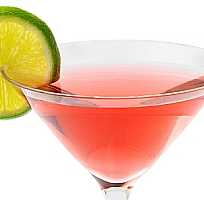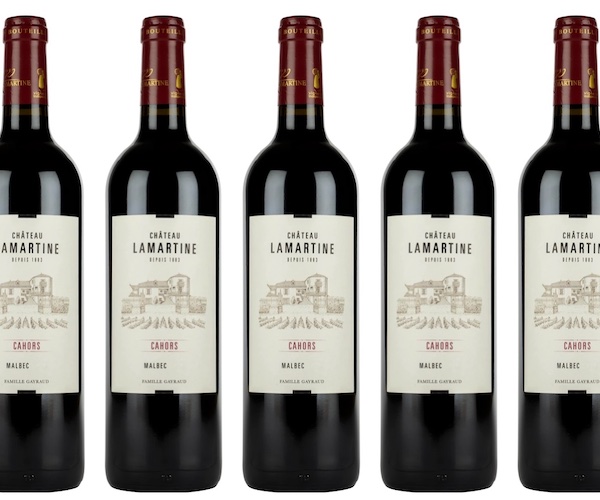by Christine Sismondo
Earlier this week, I was at the Ritz-Carlton, although not, as one might expect, to visit the talented and charming head bartender Moses McIntee for one of his stunning cocktails. Rather, I was there to meet Xavier Padovani, in town to give a little deconstructed tasting of Hendrick’s Gin. By deconstructed, I mean that he had samples from different stages of the distillation process, samples from both the Carter-Head still and the Bennett still, as well as bottles of the rose and cucumber essence which all blend together to make the lovely, aromatic Hendrick’s which, everyone who knows me understands is one of my favourites. Perhaps most interesting was a taste of Padovani’s 140-proof sample that, while obviously not nearly as smooth as the finished product, was strangely drinkable. I had a moment where I wondered if my palate had grown too accustomed to high-proof booze. Padovani assured me this was not the case and that it was a remarkable quality of the liquor.
But that’s almost all I’m going to write about the gin today. Let’s face it, the guy had me at cucumber and Hendrick’s, along with Plymouth, are my first two go-to gins. If you haven’t already tried it, go get some.
What I want to write about, instead, was a friendly disagreement Padovani and I had over philosophy of bar – something which I’ve recently been giving quite a lot of thought to, having just finished researching and writing my book, America Walks into a Bar – the first-ever history of the American bar, covering 400 years of drinking and political history. (It’ll be released by Oxford University Press in late June.) Padovani, on the other hand, beats the pants off me with his practical experience, since he owns London’s famed Experimental Cocktail Club and, what with his dual role as Hendrick’s brand ambassador, spends more time in bars than even me. But I respectfully disagreed with one thing he said, namely, that he didn’t think bartenders should refuse to serve Cosmopolitans.He’d been in a bar where a woman was told she couldn’t have one. The woman left and Padovani felt sorry for her. At his bar, therefore, he asks that his bartenders make them the “best-ever Cosmo” if that’s what the customer is really asking for. Fair enough. And, for the record, I also abhor snobbery in a bartender. Taste is, primarily, an indication of class position. And those who use it as a club to beat others down should be ashamed of themselves. That said, as I understand it, the objective of the good food and drink revolution is to introduce people to better ways of buying, eating and drinking and to grow a community of people who can recognize that guzzling tasteless alcohol flavoured with sugar and colour is neither the most pleasant, nor the most healthy way to imbibe.
Now, full disclosure time. Some of you may think I’m associated with an establishment that got a little press for having a no-Cosmo rule. I am not (no matter what you read in the newspaper of record). Nor did I ever come up with such a rule. And I don’t think there’s a place in Toronto that enforces one. But I appreciate and respect other places that do, like Milk and Honey in New York City, where owner Sasha Petraske rather famously refused to stock cranberry juice ten years ago, so that people would be forced to try something new and the masses could start weaning themselves off vodka. What I appreciate the most about Petraske’s policy is the reversal of the idea that the customer is always right. Because, in fact, in my experience, the customer is often wrong. There, I said it.
We have lived in a consumer-driven food culture for more than 50 years. And what it has brought us is fast, cheap and convenient food laden with sugar, salt and fat. It has produced a monoculture agriculture which produces tasteless chickens and cows. It has produced unprecedented obesity and diabetes. Drinks-wise, our generation has grown up with a powerful thirst for candy.
I’ll also say that I like the occasional Big Mac and think Coke is a really tasty soft drink—especially in Mexico, where I swear the cane sugar makes a difference. I also get why busy people opt for cheap, convenient food. Unless you have time and money, it’s hard as hell to eat really well.
On the other side, there’s also a growing movement of people who want to turn away from the consumer-driven food model which prioritizes quantity and price over quality and desperately want to introduce people to better food and drinks with character – not just sugar and colour which, frankly is all that the Cosmo ever was. And I don’t walk into Cowbell and ask for a Quarter Pounder with Cheese, so why do bar-goers blanch and take it as an insult if they’re told an establishment doesn’t carry candy-pop drinks?
Bar-owners are afraid not to carry everything for everyone, just as restaurateurs were ten years ago. But what’s the first thing that Gordon Ramsay does when he walks into a Kitchen Nightmare? He tells the owner that his menu is way too big. Narrow it down, figure out what you’re good at, then do it well. Bar owners should start doing the same thing and explore niche markets, like Reposado on Ossington and Café Volo on Yonge Street have. Would you go to Volo and insist on a Corona?
Some people are working towards this in Toronto. Last week was a very drunken one for me – I went to Made with Love Mixology at The Drake Hotel, where throngs tasted the best efforts of some very talented bartenders. No choice – people went to stations manned by the likes of Gavin McMillan, Rob Montgomery, Michelle Tham, Scott McMaster and Wes Galloway and drank what they were given. The next night, I went to Kindle at Marben restaurant, an event run by Sandy De Almeida and Mike Webster, where a full room of people happily paid fairly big bucks to drink from a prix-fixe menu of four cocktails. No choice, no substitutions. Sit down and put yourself in Mike and Sandy’s more than capable hands. These were some of the best drinks I’ve ever had in Toronto and there wasn’t a complaint in the room. The following night, I went to a private party cocktail club at a warehouse space. Again, the drinks were pre-ordained, and everyone had a lovely time.
What I’m suggesting here is that consumer choice is overrated, particularly if you’re in the hands of people who know what they’re doing. As a Chilean cook I used to work with pointed out, in his country, customers don’t tell the chef how to modify his recipe and demand to eat off the menu. You eat what the cook makes you; he’s the expert, not the customer.
North America is finally catching on to this concept and Lynn Crawford’s only awesome Ruby Watchco is a great example. Not that everyone needs to – in that there’s plenty of room for people who want to make vodka drinks. But there’s also a market for other concepts, like Petraske’s, where customers are challenged to venture beyond their comfort zones. And if we want to grow an alternative to our fast-food hot mess of indifferent food and drink, we should be open to a model that can help reform some of our culture’s half-century decline into drinks that are merely sugary alcohol-delivery vehicles, as opposed to carefully balanced cocktails which challenge our senses.
It won’t be easy. But we can do it. One Cosmopolitan at a time.
 Barfly and cocktail writer Christine Sismondo is the author of the forthcoming America Walks into a Bar: A Spirited History of Taverns and Saloons, Speakeasies and Grog Shops (Oxford University Press, June).
Barfly and cocktail writer Christine Sismondo is the author of the forthcoming America Walks into a Bar: A Spirited History of Taverns and Saloons, Speakeasies and Grog Shops (Oxford University Press, June).









Trackbacks/Pingbacks